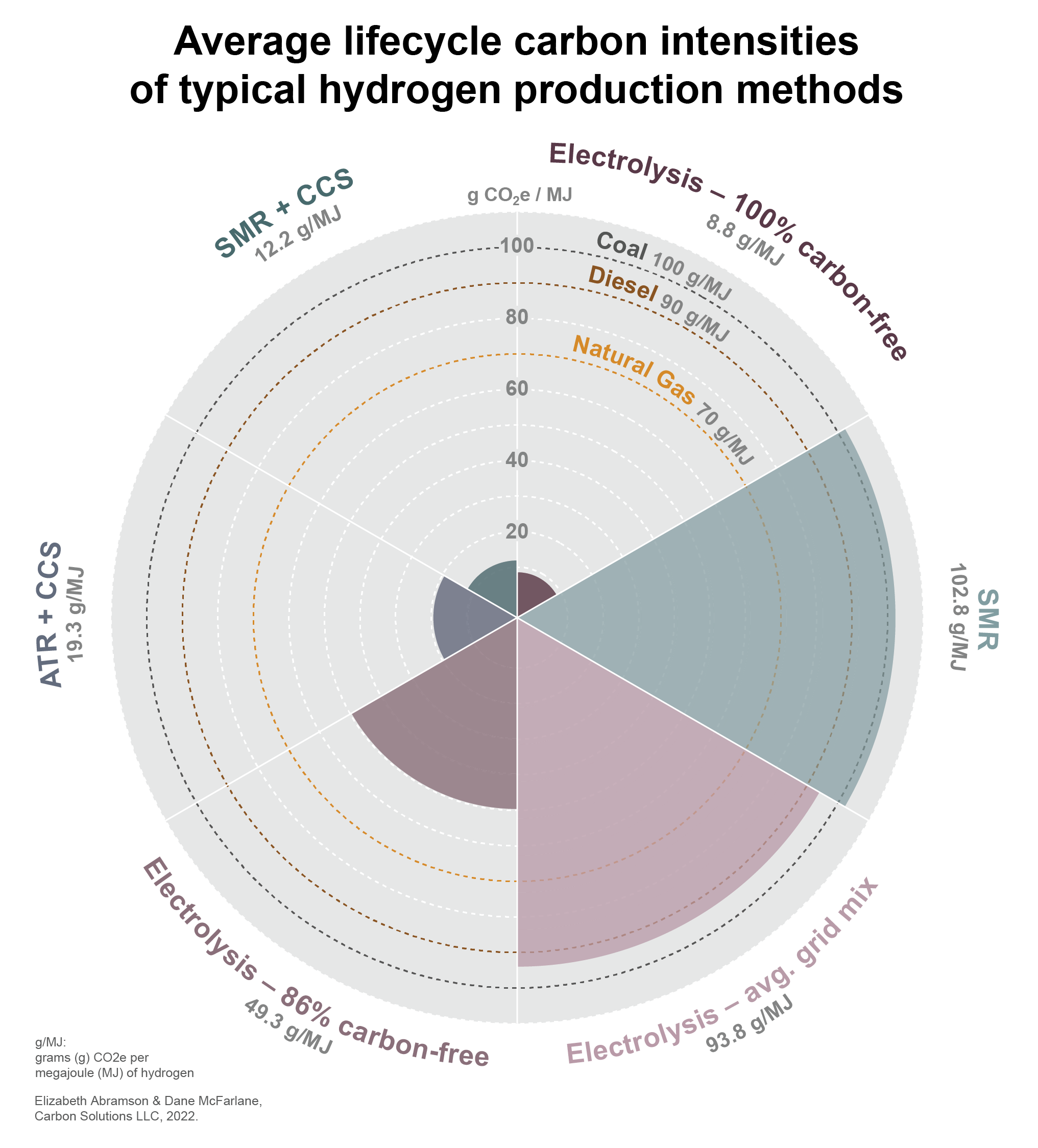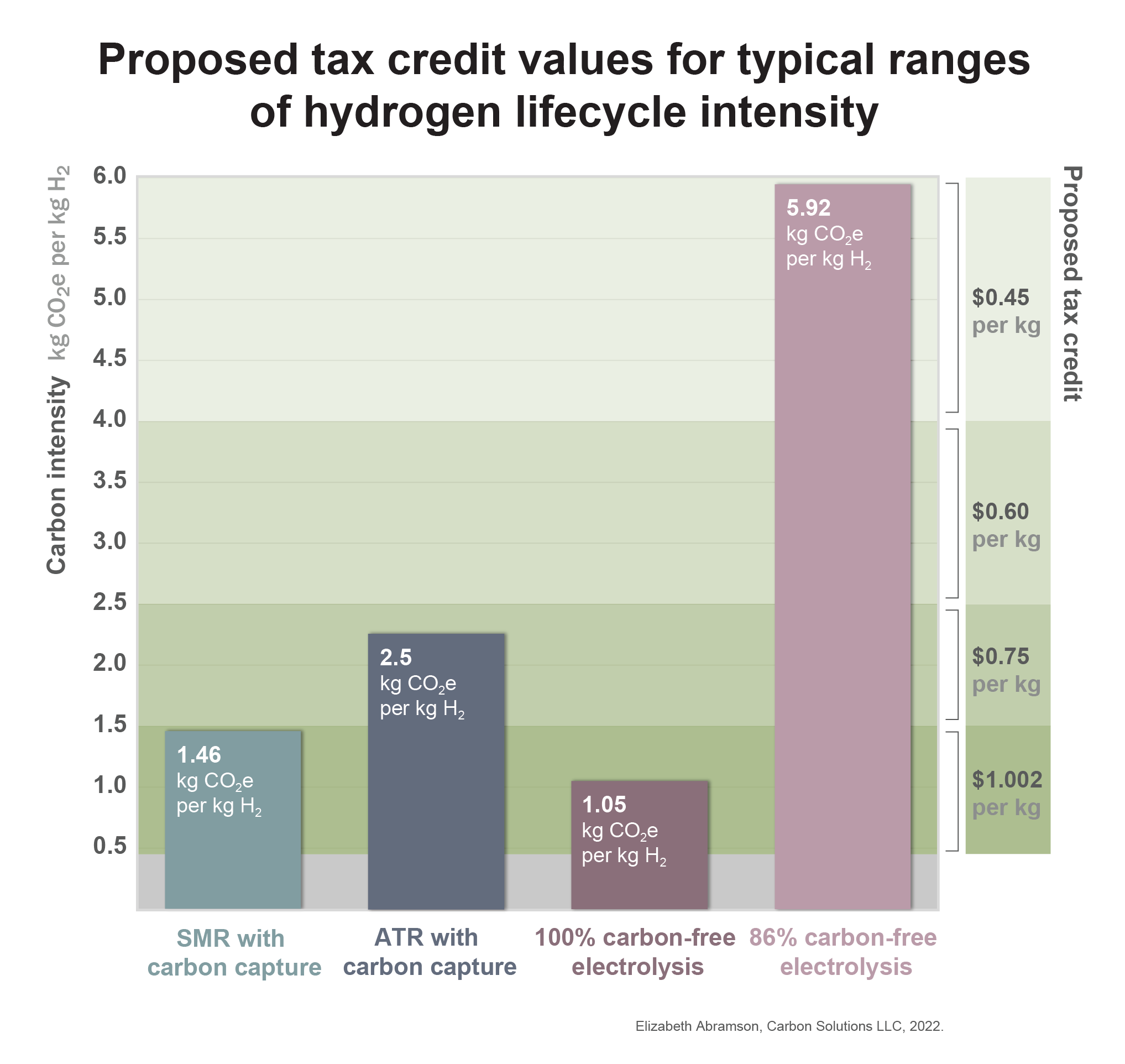Hydrogen: A Climate Solution
|
In a recent post on his blog GatesNotes, Bill Gates calls hydrogen the Swiss Army Knife of decarbonization. While noting that we have a variety of options to reduce greenhouse gas emissions from common uses of energy such as electricity and passenger vehicles, Mr. Gates explains that this still leaves two thirds of global GHG emissions (35 gigatons per year) to address by mid-century. Much of these emissions come from difficult-to-abate sectors like industry and heavy-duty transport or shipping. Electrification is often not an option in such sectors, like cement manufacturing, steel production, and heavy duty vehicles, due to operational requirements or the need for high-grade fuel and heat in chemical processes. This is where hydrogen can come in to play. Hydrogen as an alternative to fossil fuelsHydrogen is a simple but versatile energy carrier that can provide large amounts of energy, not only to electric applications in battery-like fuel cells, but also to industrial applications through combustion in place of fossil fuels like natural gas, coal, and diesel. In stark contrast to fossil fuels, neither the combustion of hydrogen nor the use of hydrogen fuel cells produce GHGs while delivering energy. The International Energy Agency’s (IEA) net-zero emissions scenario requires that 13 percent of global energy demand be met with low-carbon hydrogen by the year 2050. Today, most hydrogen is produced through a natural gas-based process called steam methane reforming (SMR) and is used as a material or chemical feedstock in petroleum refining and ammonia fertilizer applications. While it is true that the use of hydrogen does not result in onsite GHG emissions, as mentioned above, the processes of using energy and transportation to produce hydrogen from feedstocks does result in upstream lifecycle emissions (this also occurs when producing fossil fuels). Due to its reliance on fossil fuel feedstocks, hydrogen produced through the SMR process does not necessarily provide GHG reductions compared to natural gas and other conventional fuels. Fortunately, there are a variety of hydrogen production pathways that result in deep decarbonization as an alternative to fossil fuels. |
|
Carbon Solutions analysts modeled dozens of typical hydrogen production pathways through the use of peer-reviewed published literature and tools like Argonne National Laboratory’s GREET Lifecycle Model. In addition to the conventional SMR process mentioned above, we also included hydrogen produced via autothermal reforming (ATR), a process similar to SMR. Both the SMR and ATR processes are compatible with carbon capture equipment, leading to deep carbon reductions when captured CO2 is stored permanently. We also studied hydrogen production via electrolysis, where water molecules are split into hydrogen and oxygen through the use of electricity. When powered primarily with zero-carbon electricity from renewables or nuclear power, electrolysis-based hydrogen can provide some of the largest GHG reductions of the pathways we studied. |
||
Table: Range of GHG intensity in literature for H2 production methods (gCO2e/MJ) |
||
 |
||
Scaling hydrogen production and useThe United States currently produces about 10 million tons of hydrogen per year, according to the U.S. Department of Energy (DOE). To replace 100% of industrial natural gas use in the United States, nearly 40 million tons of hydrogen would need to be produced, representing a four-fold increase above current production levels. In reality, current natural gas applications will likely be decarbonized through a combination of hydrogen, electrification, carbon capture, new production innovations, and energy efficiency. To supply 13% of U.S. energy demand, along the lines of the previously mentioned IEA net-zero scenario, over 100 million tons of hydrogen would be needed, representing a ten-fold increase above today’s level of production. So how can we scale the production and use of hydrogen in the less than three decades we have before mid-century, aka the year 2050? The U.S. Department of Energy has recently announced $8 billion (USD) in funding for regional clean hydrogen hubs (H2Hubs) around the United States. According to DOE, “H2Hubs will create networks of hydrogen producers, consumers, and local connective infrastructure to accelerate the use of hydrogen as a clean energy carrier.” Institutions such as the Great Plains Institute have already released analysis regarding where these hubs might best be located. The next step is for companies, regions, and coalitions to respond to the recent DOE funding opportunity announcement (FOA) related to the H2Hubs initiative. In addition to $8 billion in funding for H2Hubs, a proposed bill in the U.S. Congress seeks to provide tax incentives for carbon-reducing hydrogen production. Senate bill S.1807 would establish a production and investment tax credit related to the production of clean hydrogen. The amount of the credit is based on the specific lifecycle GHG intensity of each hydrogen producer, and the amount of GHG reduction provided when compared to conventional fossil-based production. Because there is currently no federal policy that establishes requirements or provides economic incentives for the procurement of low-carbon hydrogen versus conventional hydrogen, this tax credit would be a first step in establishing competitive market signals based on the climate impact or benefit of hydrogen production methods. Carbon Solutions analysts used our hydrogen lifecycle assessment (LCA) results to estimate the potential tax credit value of each kilogram (kg) of hydrogen produced by typical methods of producing low-carbon hydrogen. The results are presented in the following chart, with the range of tax credit values shown on the right: |
|
This estimate of potential tax credit value is based on the average lifecycle GHG intensity of typical methods of hydrogen production based on results published in peer-review literature. The actual GHG intensity and resulting tax credit would be calculated from specific LCA scores based on actual facility operations and feedstock supply chain. Carbon Solutions is embarking on a number of initiatives to support the development of hydrogen hubs throughout the United States. If you are interested in learning more, feel free to get in touch with me at dane.mcfarlane@carbonsolutionsllc.com ContributorsWriter & Editor Lifecycle Assessment & Literature Review Design and Visualization SourcesAjanovic A et al., The economics and the environmental benignity of different colors of hydrogen. International Journal of Hydrogen Energy (2022). |


